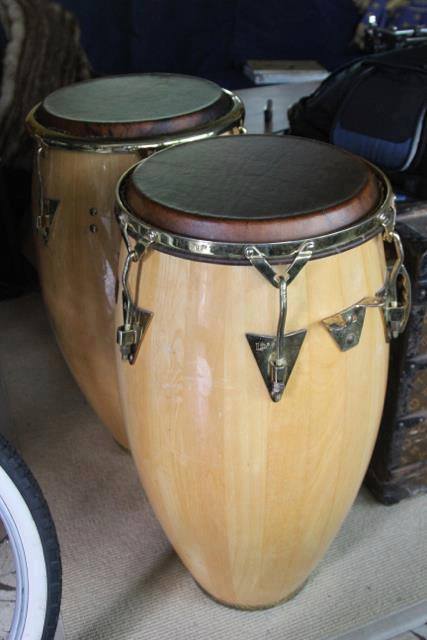As much as I love exotic, hand made modern or vintage wood conga drums and appreciate the massive amount of work and talent that goes into each individual drum, the fact of the matter is that most people can not afford one.
Many people often make the mistake of thinking they need new drums when in fact they only need to better match the skins they are currently using with a new high quality balanced skin match. Almost always in any case I have recommended new skins the people come back and say it has made a world of difference. for the better.
Interestingly enough, many of todays modern mass produced shells made in Thailand are put together so well that if you can get the right skin set up on your drum, it really can sound fantastic. It may never sound as good as a high end artisan hand made drum or be as special but you can make your drum sound fantastic none the less.
What is really going to matter the most in getting optimum sound on almost every drum, is the choice of skin you use. And of course your playing technique but that goes with out saying.
It’s my personal belief that it does not matter where the drum was made. Of course I like, love and support single artisan hand made drums as you all know. And I have written much about why they are worth every penny that is asked for them.
A solid shell or hand crafted shell is always going to be superior in many ways to a mass produced shell.
I am not arguing that point. But what I am saying is a top of the line highly desirable Matt Smith drum with the wrong skin is not going to sound good. I know as I have mis-mounted and put the wrong skins on drums before and they sounded terrible!
And a Mexican old school drum or Thai sourced conga drum can indeed sound great with the right skin!
Great drum + great skin = great sound. Great drum + bad skin= bad sound.
Average drum + great skin= great sound!
Many folks sell great drums thinking the drum is bad when in actuality, all they need to do is switch to a different skin.
Most people think it is the wood making ALL the difference in the sound. It does of course play a very high 50% (more or less) part especially the thickness of the wood, weight, wood type and the density. But if the shell has the proper ratio of size and weight, if the top width and bottom width are correct *(which every manufacturer has down pat now), then what is going to make your sound (besides your playing technique) better or worse is the type of skin you use and the thickness of the skin.
The match! It’s all about the correct balance of the right skin to match the drum. I contend that any drum can be made to sound much, much better by finding the right skin balanced to off set the inherent qualities of the shell. If you put a thin steer skin on a large Junior Tirado mahogany drum (as I mistakenly did some years back), it’s not going to sound good. It’s going to be ringy as hell.
But it’s not the drum. it’s the skin. If you put a bleached white cow skin of about 2.0 mm on the same Junior ( which I did), it’s going to sound wonderful. Its tough to make thin small shells that are smaller and light weight (like LP CP) sound great because there is just not enough mass to resonate. But any of the LP drums from Matador range on up can sound great with the right skin. Same for Meinl and other Thai made drums. The photo below shows my LP classic with thick steer skins on them. Super great sounding.
It’s not as crucial to me to have the skin be perfect even thickness al the way around like it is on a djembe but I do prefer if it is. An even skin is going to sound better.
The Thailand manufacturers (basically all the major brands), pretty much throw the skin on the drum, it is about speed of mounting. They use water buffalo because it will indeed endure humidity and is very inexpensive for them. Furthermore, they last a long time and can be stored with out problems. From a manufacturers point of view these are the best possible choice. Some (at least 2) companies here in Thailand (where I am living now) are now offering cow skin products on a select model. I played the Tycoon and they were “over processed”.


